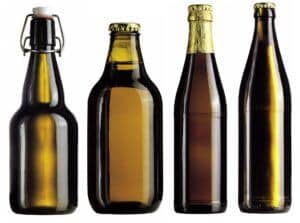Welcome to Make Beer Easy my friend.
How to Home Brew? Well in this article I am going to show you pretty much everything you are going to need to make good beer from home… and if reading this post you still have questions I am here to help you… just put a comment in the comment section below and I will be sure to answer you and do what I can…
OK, so I started this blog a few years back with the intention of detailing my home brewing journey. The blog has since

When I started this blog I had been making kit beers for about 12 years… and I focused most of the blog on videos of me brewing these kits and getting a wee bit intoxicated in the process. It Happens!
Nowadays I have tamed that all down and you will find mostly resources on here to help you become a good brewer.
So a bit about me…
Well to start they call me Big Robb… I guess you could say that is my brewing nick name. It stems from being 6’5” and a hefty 265 I suppose…
I have now been making beer for about 16 years… I got into brewing for 3 reasons:
1) I like to make things… Beer, Blogs, Businesses, etc… it occupies my time and I enjoy it.
2) I love beer… My super power is making beer and then making it disappear.
3) I live in Canada… and the cost to buy beer is plain stupid. It is legal theft by the Government. They tax the crap out of it. 12 bottles of beer is easily $25 cnd up here… which is probably close to $30 usd. Simply brutal. So I wanted to make beer in order to cost that cost down.
So I started making home brew. I started the way most people did using the beer kits… it took me a very long time to be able to get to the point where a brew from one of these kits I brewed actually tasted good…
I know many of you can relate to this… have no fear I did figure out how to improve a beer kit and we cover that in this article…
I then moved onto partial mash brewing… this is where you start to use some grains and hops in the brewing process… kind of an in between point between the malt extract beer kits and all grain.
You can make very good beer easily doing partial mashes and we will cover that in this article also…
And then after only a few months of partial mash brewing I took the giant leap into All Grain brewing… That is how I brew most of my beers now. And I again I will explain in this post how to get going and make great all grain beer.
Now you would have thought that would be the end of my brewing story… but know I got the great idea to up my game and move from being a home brewer to opening a microbrewery. It is a small microbrewery, only 2 bbls, so more of a Brew Pub. That was a heck of an adventure to say the least. I have since sold the pub and now get to focus all of my time on this blog and helping you fine people out.
So that’s my story… and enough of that… if you really want to read more about my adventures and the ups and downs I had in my home brewing adventure you can read my about me page.
OK let’s get you started on your brewing journey… regardless of what stage you are in… beginner looking to start making beer from kits… or a person who has brewed some beer from the kits and wants to move up to partial mash brewing… or a person who has some experience under their belt and is ready to jump right into All Grain Brewing… regardless on this page and definitely on this site you are going to find information to help you!
We are going to start with the basics on the home brewing equipment you will need…
Home Brewing Equipment – What You Need
At this point I am going to talk about the basic home brewing equipment you need to get started.

What is neat about brewing is regardless of what level of difficulty you are at… whether kit, partial mash or all grain… when it comes to the “cold” side of brewing the equipment is all the same.
The cold side of brewing is the equipment you will only require if you are brewing from the malt extract kits… and if you are a partial mash or all grain brewer it is the equipment you will use AFTER you have chilled the wort… it is the exact same equipment.
The following is what you need:
- A fermenter
- A hydrometer
- A thermometer
- A large plastic mixing spoon
- Bottles or kegs
Further, in this post I will talk about the equipment you will need for the “hot” side.
You can pick up the “cold” side equipment all over the place. Many online home brew suppliers sell all f the equipment.
I do have a favorite manufacturer who I prefer their equipment over the rest. I talk about them AND I give more details on the equipment you need here on this post:
Click there for => What Do I Need To Brew a Beer?
Homebrewing Supplies
So now that you have a basic idea of what you require to get started, this leads into the next question of where do you get your homebrewing supplies at?
There are many places you can do so. If yu live in any sized city at all there are probably a couple of local homebrew stores nearby you that may have equipment and supplies; however I always prefer to purchase my gear, equipment and supplies online as the selection is typically better and the freshness of the ingredients is usually also better.
I have done up a list of the my Top 5 online vendors. You can check out that list by Clicking Here
I have also done a review of 7 of the vendors here => Home Brewing Supplies Online
The Best Water For Making Beer (Water Chemistry)
Water makes up 90% of a beer and as such obviously plays an extremely important part of the brewing process.
To Learn all about what makes the best water for brewing and how to modify yours to make even better beer check out this post:
How to Sanitize Beer Making Equipment
How many times have you heard someone tell you they tried to make beer and it turned out terrible?
Probably the majority of people who try their hand at this hobby have that experience when they are first starting out…
There are a few reasons why their brew turned out bad… and we will look at them in this post… but by far the main reason their beer ended up tasking like crap has to do with improper cleaning and sanitizing.
Beer is highly susceptible to infection from bacteria…
Cleaning and sanitizing your beer equipment is crucial. If you don’t the beer will get infected and it will produce those nasty off flavors that people complain about.
Now have no fear… cleaning and sanitizing can be easy and quick if you do it right.
Basically you will want to clean all of your equipment… both hot side and cold side equipment.
It is true that you do not have to worry as much about the equipment on the hot side as it will become cleaned and sanitized when you boil the wort (unfermented beer).
However, you still don’t want crap sitting around your kettles… so clean them.
You can use a simple unscented hand soap to clean all of your equipment with… be sure to rinse it well.
Anything that is plastic do not use any cloth, sponge, cleaning pad or wire brush that is abrasive as it will scratch the plastic and allow bacteria to hide in the scratches. A smooth cloth and elbow grease will do the trick.
If you find that too much gunk has built up and it will not come off, then you can soak it in PBW (powdered brewery wash) or simply use unscented oxyclean from your hardware store. Rinse well.
Now anything that is stainless steel do not worry about scratching it… you can use anything that will remove the gunk build up.
As for sanitizing your equipment… you only need to sanitize the cold side equipment as anything on the hot side will be sanitized during the boil.
You will want to soak ALL of your cold side equipment in a food grade sanitizer.
The following link will take you to a detailed post explaining all you need to know in regards to how to sanitize your beer making equipment the right way. ((including the only sanitizer I recommend, and how to use it and when.)
Click there for => how to sanitize beer making equipment
How to Brew Your First Beer
If you are just learning how to home brew I always recommend that people start making beer with a beer kit.
When I say beer kit I am talking about the can of malt extract you buy that has the yeast under the cover. I lovingly refer

I recommend that people start here because you learn the basics of brewing…
Making beer is not hard, but if you want to become an All Grain brewer there are many steps in the process that you need to know, understand and get right or you will mess up your beer.
By starting brewing with a can of goo, then moving to partial mash brewing where you start to use grains and hops before moving to all grain brewing… allows you on job experience and practice… you learn as you go… you get the basic steps down pat… then learn the intermediate steps… and then the more advanced steps.
Now having said that I do know people who have jumped right into all grain brewing and did just fine.
I just think it will be easier on you, less complicated and less expensive to tackle it one step at a time.
When you go to brew your first beer there will be a horde of kits you can choose from…
The following link will take you to a post that will show you ALL the steps you need to take to brew a batch of beer using a beer kit. In the post I talk about the 2 Best beer kits on the market and how to make them even better.
Click the Following link for that post: Discover the 2 Best Home Brew Kits
Personally if this is your first time brewing beer… I HIGHLY recommend the Coopers DIY Kit.
This kit comes with everything you need… all of the equipment I mentioned above AND it comes with your first ol’ Can of goo…
… so you get it all in one kit… equipment and ingredients.
Plus the Coopers Kits are the one of the best kits on the market when it comes to make good tasting beer. I recommend them and Mr. Beer.
Click the Following link where I review the Coopers Kit: Coopers HomeBrew Kit
In regards to the Mr Beer Kit I should say that they also come with all of the equipment you need AND ingredients, however it is smaller, which means you brew less beer. Mr Beer makes about 2-3 gallons per batch and Coopers makes about 5-6 gallons per batch…. So it really comes down to how much brew you want to make at a time.
And the following link I talk about the Mr. Beer kits and how to brew them.
Click there for => Mr Beer Brewing Instructions
(you will also notice on that post that I show you how to add some ingredients to improve on the Mr Beer and Coopers ol’Can of Goo).
Partial Mash Brewing
Alright so when you are ready to move up to the next stage of brewing you are going to find that partial mash brewing does not have a whole host of a lot more steps involved then brewing with the malt extract kits… but there are a few extra.
The cool thing is you are now going to start using grains and hops and also start boiling your ingredients.
So you will require a small pot or kettle… just a big stew pot you can use on your ovens burner will be fine… if it can hold at least 3 gallons you are good.
You will also require a strainer. Just a simple kitchen household strainer will be great.
I am going to give you a link to a very detailed post on this form of brewing… it is going to walk you step by step through the process and also show you the best partial mash kit to use…
However here is a brief overview of how a brew day would go:
=> Sanitize your equipment as discussed above
=> Heat up about 2.5 gallons of water. You want to get to about 150 – 160 degrees feranhite
=> Steep the grains. Put the grains into the grain bag and soak them in the warm water for about 20 minutes.
=> Drain the liquid. Using the strainer, drain the liquid out of the grains into the pot.
=> Turn the heat up and get the kettle to boiling. You want a slow rolling boil, not a crazy out of control boil.
=> Add the malt extract that the recipe calls for into the boil. Stir it well so that it dissolves.
=> Add the hops to the boil as per when the recipe you are using advises you to.
=> Once the boil is over, you chill the wort down to about 70 degrees Fahrenheit. Then pour it into your sanitized fermenter.
=> Add water to fermenter to bring the level of the fermenter up to about 5 gallons. You will want the temperature of the water to be about 64 – 72 degrees Fahrenheit.
=> Pitch the yeast. Which means gently sprinkle the yeast over the top of the liquid. And stir it with your sanitized spoon.
=> Ferment the beer. Put the lid on the fermenter and put the beer away in a dark room temperature space in your home for two weeks.
And that is it… those are the basics of partial mash brewing.
Here are a couple of posts to help you get going with this type of brewing:
Click there for => Easy to Follow Partial Mash Brewing Instructions
Click there for => Brewers Best Beer Kit – In this post I talk about Brewers Best kits… they make great partial mash brews.
What I really dig about them is they again come with everything you need:
- Detailed instructions on how to brew their beer
- All of the ingredients (Malt, Specialty grains, Hops, Yeast)
- Grain bag to steep the grains
- Priming sugar to carbonate the beer
All Grain Brewing Instructions
And now it is time to play with the big boys… All Grain Brewing is where it is at in terms of being able to control all

And it of course makes the best beer (in most cases).
Now I do not want to scare you off… because in reality learning how to home brew with all grain recipes is not hard… it’s really not. If I can do it anyone can.
Having said that it is also not easy… and by not easy I mean there are many steps involved that you need to understand and get a good handle on.
The good news is that if you have followed along throughout this process and brewed a couple malt extract beers and a couple partial mash beers then you understand many of the steps already.
I am going to provide you with some links to other posts that will help you understand the different methods of brewing all grain beers… as well as the equipment you will need and the brew day instructions.
You will have to now invest in some more equipment…. This can get some what pricey depending on how you choose to brew.
But have no fear, this is Make Beer Easy after all…
… and I recommend a method of brewing that is the simplest form of all grain brewing… the least costly… requires the least amount of equipment… and makes as good or better beer then the other methods of all grain brewing.
So instead of wasting your time on this post I am going to point you to post on this site that will teach you everything you need to know to brew all grain beers:
=> The following link will take you to a post that shows you everything you need to brew all grain beer and where to get it:
All Grain Brewing Instructions
=> And these next links will take you to posts that goes into further details on my favorite All Grain Method of brewing. Its called BIAB or Brew in a Bag. The Australians invented it and it incredible.
You will find there simply is not an easier, less expensive way of making delicious all grain beer.
Click the following link for: How to Brew in a Bag – Step by Step
Click the following link for: How to BIAB – Step by Step
Click the following link for: Electric BIAB – Everything You Need to Know
How to Cool Your Wort
Cooling your wort quickly in order go get it down to the correct temperature to add your yeast (called pitching) is one of the most important aspects of brewing. However because it is something you do towards the end of your brew day most people tend to not pay much attention to it.
This is a huge mistake. Many important aspects of how your beer will turn out in the end are developed at this point of the process. Off flavors and infections can occur if you do not pay close attention to cooling your wort.
The following link is to a post on how to cool your wort the right away. I provide 5 options for you to use to get your wort chilled.
Fermenting Beer the Right Way
Alright so now you have brew day almost done and it is time to turn that wort into beer.
Thank the good Lord for creating a little critter called yeast eh? Man those little yeasties are some of my favorite creatures on this planet. The magic stunt they pull turning that sugary substances called wort into beer is glorious!
OK so there are a few things we will want to look at to make sure you give these yeast the best chance to make beer and the optimal conditions to make sure they make the best beer they possibly can.
=> First make sure that the yeast you are using is a good yeast. One of the ways I always tell people they can improve the beer they are making from the malt extract beer kits is to not use the yeast that comes under the cap. But instead swap it out for a more reputable yeast.
You will also want to make sure the yeast is newer, and has not been sitting around a homebrew shop for years waiting to be sold.
=> Secondly as we have talked about you need to make sure the fermenter is fully cleaned and sanitized. I can not stress this enough. If you get a bad batch there is a 99.99% chance you did not sanitize your equipment correctly.
=> Third when you pitch the yeast you want to make sure that the temperature of the wort is within the correct range. If it is too cold it will put the yeast to sleep and if it is too hot it can kill the yeast.
Putting the yeast to sleep is better than killing it obviously. If the temperature of the wort is too cold the yeast will wake up as the wort temperature increases to room temperature.
The ideal temperature for most yeast is between 62 – 70 degres Fahrenheit.
=> And the Fourth point is also dealing with temperature. This time it is the temperature at which you ferment the beer. I.e. the temperature of the space / room the fermenter is in while fermentation is under way. Again the ideal temperature range is between the 62 – 70 degree point.
I tend to stay down towards the lower end of that range, as the temperature inside of the wort actually increases during fermentation and as the yeast goes to work. It can increase by as much as 5 degrees.
=> And point number Five is… give the yeast time to do their work. Some people get all concerned when there is not much action going on inside the fermenter. Relax if you did everything right the magic of beer making is happening.
Sometimes the fermentation is almost violent… some times it is slow… sometimes you can barely even tell it is or has happened. Just give it time to do its thing.
Even after the active fermentation that you can see is over… fermentation can carry on for quite a few days afterwards and you will not be able to visibly see anything happening.
I simply let my beer ferment for two weeks and don’t worry about it.
Yes you can check the gravity daily if you like using your hydrometer and when the gravity has not moved in two days then fermentation is over.
I rarely bother to do this any longer… beer is better when it has time to age and condition some and fermentation is 9.9 times out of 10 over in two weeks, so I just let it sit and forget about it.
=> And lastly point 6 is back to the yeast… Two quick things on yeast. You can re hydrate your yeast if you like. Some claim that yeast viability is reduced if you just sprinkle the yeast on top if the wort instead of re hydrating it. I have never experienced this. But it is easy to re hydrate your yeast so if you are concerned take the few minutes and do so.
Most yeast packets will provide you with instructions on how to re hydrate the yeast. The basics of it are you fill a bowl with warm water 95F (35C) – 105F (40C) and sprinkle the yeast on top of it, covering it with aluminum foil. I tend to do this 30 minutes before I am going to pitch the yeast. Once you are ready to pitch the yeast just dump the whole mixture into the fermenter.
The last point on yeast is… this is the only time oxygen is good and required in the brewing process. Once you dump the yeast into the fermenter, take your sterilized mash paddle (spoon) and stir the wort good.
That’s it… follow those instructions and you will have a good fermentation on your hands… now that we have fermented that brew let’s look at how to make sure we have the clearest beer possible…
Nothing worse in my books then floaties in my beer!
How to Clear Home Brew Beer
Let’s be honest… a buddy calls you up and tells you that he made some beer… you drop by to have a taste… what’s the first thing you do when he pours you the glass of brew?
I know for me I take a good hard look at the contents of that glass… am I about to drink down a ton of floaties? Do I need

I for one do not enjoy floaties in my beer… I like a nice clear beer man!
So when I was learning how to home brew I spent lots of time researching and learning how to clear home brew beer.
The following are a few things that will help you have nice looking brew on your hands:
=> The first thing is not something you could do with malt extract kits, but for partial mash or all grain you can add Whirlflock to the boil. Whirlfock is compressed Irish Mosh. It helps drop all of the trub (sediment, floaties, etc) out of suspension in the beer and to the bottom of the kettle. So when you are transferring from the kettle to your fermenter you are getting less of that stuff in your beer.
For a 5 gallon batch one whirlflock tablet will do. For an all grain beer fire it in at the 20 minute left in the boil mark. For a partial mash shot for around the 10 minute left in the boil mark.
=> Second up is cold crashing… Once fermenting is done and before you bottle or keg you can cold crash the beer. This is typically done by taking your fermenter and putting it in a fridge for 24-48 hours. Living in Canada I have even put it outside in the cold to do this, just make sure it does not freeze. A fridge is obviously ideal.
This makes any floatie, yeastie, etc drop to the bottom of your fermenter. Cold crashing does wonders for making a clear beer.
=> Next you Gelatin to your beer… Now some do not like to do this and that is obviously their call. I have no problem with it for myself and I can tell you it clears a beer up very nicely. And it is easy to do.
You pick up the gelatin at any grocery store. Add ¾ of a cup of warm water to your measuring cup. Add 1 tsp of gelatin to the cup and stir it until the gelatin is dissolved. Then add the gelatin to your fermenter if you are bottling your beer or directly to your keg if you are kegging your beer. I find that after 24 hours the gelatin has worked its magic and the beer looks great.
=> Clarity Ferm by white labs is a neat little product that does two things:
- First it reduces the appearance of chill haze in your beer, meaning your beer looks clearer. I used this in my microbrewery and it works well. All you do is add it when you add the yeast into your fermenter. Bam done and done.
- Secondly it also significantly reduces the gluten in beers brewed with barley and wheat. Beers that have clarity ferm added typically test below 20ppm of gluten which actually falls below what is considered to be gluten free. So that’s a cool addition to it clearing your beer if you are or know people who have gluten problems.
=> And lastly when it comes to learning how to clear home brew beer we are going to look at filtering… however I have devoted a separate section on filtering beer… and it just happens to be the next section so read on…
The following is a link to a post on 7 Proven Methods you can use today to make your beer crystal clear:
Click Here for => How to Clear Home Brew Beer – 7 Proven Methods
How to Filter Home Brew
To filter or not to filter that is the question. When I first looked into filtering beer I saw all these DIY wizards coming up with all sort of contraptions… modifying water filters into beer filters and doing tings that you need to be a whole host more technically inclined then I am…
So I was always of the mind bah why bother filtering my home brew? Clearing it like I just showed you in the last section does almost as good of a job in my opinion. So why bother going through the extra hassle…
Then as things typically tend to go for me… I stumbled across this very cool little product called the Bouncer Inline Filter…
What I loved about it was that it was so simple… it’s just a little mesh type filter shaped like a cylinder encased in a plastic container that connects directly to the transfer line you use to move your beer from your fermenter into your bottles or kegs.
And in the promotional video it looked like it was collecting a ton of trub and gunk out of the beer.
So I said why not, let’s give it a try. I actually bout it for my microbrewery to try it out.
And I can tell you I love that little piece of kit… it is inexpensive, easy to set up and it helps filter and clear the beer nicely.
The following link will take you to a post with a video review of the bouncer inline filter. I show you it in action.
Check it out if you are interested, by Clicking there => Bouncer Beer Filter
How to Bottle Home Brew
OK now we are cooking my friend… at this point we now have some beer and need to get that bad boy carbonated up.
I have mixed feelings about bottling home brew. First off I love it because of its simplicity. It is much easier to get started

I also love bottling because I like the taste of naturally conditioned beer (beer carbonated with sugar), over beer carbonated with Co2.
However, there is a lot more work involved with bottling. You have to clean and sanitize all of the bottles. And you have to add priming sugar to the bottles. And of course you have to fill all of the bottles with the brew and then cap them. And of course you need the space to store all of the bottles.
So I am torn between bottling and kegging… so what I do is instead of only brewing 5 gallons… I brew 6 gallons… this way I have 5 gallons that go into the keg and 1 gallon that I bottle. So I get the best of both worlds. The ease of kegging and I treat myself from time to time with a nicely aged bottle conditioned brew.
So how do you bottle?
It’s simple really…
=> First clean and sanitize your bottles
=> Second add priming sugar.
You can do this in two ways:
The first is batch priming. This is where you add all of the sugar to the full batch of beer and then add the now sugared beer to the bottles. You will need a bottling bucket. A separate bucket that you slowly transfer the beer from your fermenter into.
You should use a hose to transfer and make sure you are not splashing the beer around as you do not want any oxygen to get into your beer. You then add 5 0z of priming sugar to the bucket of beer. You will want to have dissolved the sugar in a glass of sterile water first.
Once the sugar is in the bucket stir it gently and then transfer it to the bottles. When you fill the bottles make sure you leave about ½” of head space in the bottles.
The second is a much easier method and reduces the chance of getting oxygen in your beer. I prefer this method. Coopers Homebrew and Muntons have developed carbonation drops. They look like little sugar pills you would feed a horse.
So what you do is you put one of these carbonation drops into each bottle and then simply fill the bottles up from your fermenter through a hose. Put the over on the bottle and you are done!
These work great and are a breeze to use. Less mess less fuss!
=> And lastly put the bottles away for a good two weeks. Yes you will see some carbonation after a few days, but you want to give them time to fully carbonate AND age and condition. The longer you can wait the better your beer is going to be. If you have the patience and can wait 1 month before drinking the brew you will be glad you did. The end product will be much better!
Alright that is it on bottling… lets jump into how to keg home brew…
How to Keg Home Brew
I will say that I delayed getting into learning how to keg home brew because I was concerned that it would be complicated to figure out and expensive.
When I made the move I discovered that it was very easy and not complicated at all… and price wise it was actually not

There is no question that kegging beer is a lot more convenient then bottling… and I must say that it is pretty cool to have beer on tap at your home.
And remember how in the section on bottling I talked about how I enjoyed the taste of naturally conditioned beer better? Well you can actually naturally condition (carbonate) in a keg also…
Instead of adding 5oz of priming sugar you would use half of that i.e. 2.5oz… simply add your beer to the cleaned and sanitized keg… add the mixture of water and dissolved sugar… then put the lid on the keg… purge the oxygen out… and then seal the lid with some co2 and let the keg sit for a couple of weeks, it will be nicely carbonated when it is ready.
Now as for how to carbonate with Co2, what equipment you need to keg, etc… The following link will explain everything you need to get started kegging your beer:
Click there for => Kegging Beer – All You Need to Know
Homebrew Beer Recipes
So where do you get the recipes to make this delicious nectar of the gods?
Great question…
If you do a google search you will find that there are all sorts of recipes out there… but which ones are good? Not all recipes are created equal. Nothing worse than finding a recipe, spending the money on the ingredients, investing the time to brew the beer and then not liking the taste.
So there are a couple of things you can do:
First if you are a Malt Extract Kit brewer stick with the good kits Like Coopers and Mr Beer and you will be fine.
Second if you are a partial mash brewer, a Brewers Best Beer kit will make you very good beer.
Thirdly if you are looking for all grain recipes I am going to suggest two options for you.
=> I from time to time post my recipe for free for you guys on this site. Feel free to use them and enjoy them. They are tried and tested by myself and I enjoy the beer each of them makes. You can check them out here: Home brewing recipes.
=> A great way I have found to get a hold of good recipes is to by All Grain kits from places like Adventures in Homebrewing. These All Grain kits come with everything you need to make the beer, ingredients, recipe and instructions.
What is cool is that you can go to their site and they have a large selection of styles of beer and under each kit people have done reviews on these kits. So you can see which ones get the best reviews. Then if you brew the beer and like it you can order the kit again OR since you have the recipe that came with the kit you can simply order the ingredients it calls for.
Click here for a Adventures in HomeBrewing review I did.
And Click the following link for my some of my All Grain Brewing Recipes
Where to Get Home Brew Supplies Online and Equipment
So where does Big Robb get his supplies and brewing equipment?
I have slowly but surely over the last numerous years become an online shopper. I now love the fact I can place an order online and within a couple of days it shows up at my house.
I also find that in the home brewing arena the online suppliers tend to have the best selection, products, prices and customer service.
Obviously some are better than others, no question about that…
So what I have done, is created a post of the companies I recommend when it comes to getting my home brew supplies online.
Check them out… (COMING SOON)
And That’s All Folks
WOW not that was the most words I think I have ever written in my life. I trust you enjoyed this how to home brew complete guide… I hope you found some information on here that is going to help you make better beer.
Here is one other resource you may find useful, some good tips on making the best beer you can:
7 Secrets to Improve Home Brew
If you have ANY questions or comments please drop them in the comment section below. I WILL reply.
Cheers to you my friend… Time for a home brew!
Big Robb is out!


Big Robb, hallelujah for your vast knowledge on home brewing!! This is a gold mine of info! So I work in wine industry and brewing beer is sort of similar, so I’m good on most stages. But. We (coworkers and I )are in the process of doing a home brew beer and and a bit confused on fining the beer. I know we use egg for fining the wine. But with beer, I don’t know. Which of your options would you recommend? Putting in a fridge?
P.s.: BC brewery called Phillips has the best beer ever! Their Stump is my all time fav.
Cheers,
Katya
Hi Katya, glad you have found the post helpful. I actually just did a post on clearing your beer. I give 7 methods I use. Feel free to check it out here: How to Clear Home Brew Beer
I will have to check Phillips out next time I make it to BC! Cheers!
Loving your clear descriptions of home brewing as well as your back story Big Robb. Wow, 6 foot 5 is a big guy and I can bet you can pack away a lot of beer. The Cooper’s kit sounds up my ally but on Amazon, it is currently out of stock so I am glad you have also included a link to the company website as well. Right now we are living with family and my brother and I are considering brewing our own but are not sure we have space. Cooper’s kit looks like a low space alternative for us so thank you for sharing.
Yup Coopers kits do not take my space… and do make good beer. Just let them condition in the bottle or keg for about 1 month. Here is a post I did reviewing their complete kit: Coopers Homebrew Kit Review
I have loved beer since the very first time I drank one and to tell you the truth, I was always intrigued by the idea of brewing my very own beer at home.
I am gathering some money right now to be able to afford the equipment and I am going to start. I’ve saved your guide for future reference!
Thank you very much!
I love this topic. I love beer so of course, I’ll love this topic!
I was unaware that I am able to make my own beer because I thought that the ingredients were out of reach for people that want to make their own at home.
I will take your advice on the Beer Kit to start off with, as I have no experience in brewing my own beer. The Coopers Homebrew Kit sounds like a great start, so I will definitely inform my husband about this, as he is a beer lover as well.
Thank you for such an in-depth lesson on how brewing beer actually works.
All the best.
I’ve never tried to brew any sort of alcohol, but I’m now more excited than before about beer! Thank you for such an in-depth guide, there’s so much useful information that I’m sure I’ll find myself here again!
I love the idea of progressing and making an all-grain beer, too. It will take practice, but with this guide I’m sure it’ll work greatly! Cooper’s kits seem perfect to start with, and it only takes two weeks! That is rather impressive if you ask me.
Thank you for sharing your knowledge Big Robb… This will help a lot of people I’m sure.
Glad to help James and welcome to the club!
Hey Robb,
Started Hazy IPA kit from WilliamsBrewing 2 weeks ago and used your “Aussie Wort Chilling” method with a 5 gal Aqua Pak. It was super simple as you said and saved a bunch of water going down the drain and out of my pocket. Thanks for the great tip. You are my number#1 go to guy for brewing.
Ed Nolan
P.S. Seriously thinking about Canada in case the good old USA gives little stubby fingers another 4 years.
Hey Ed, good to hear from you man, and glad you enjoyed the no chill method! Trust the brew turned out good. Cheers